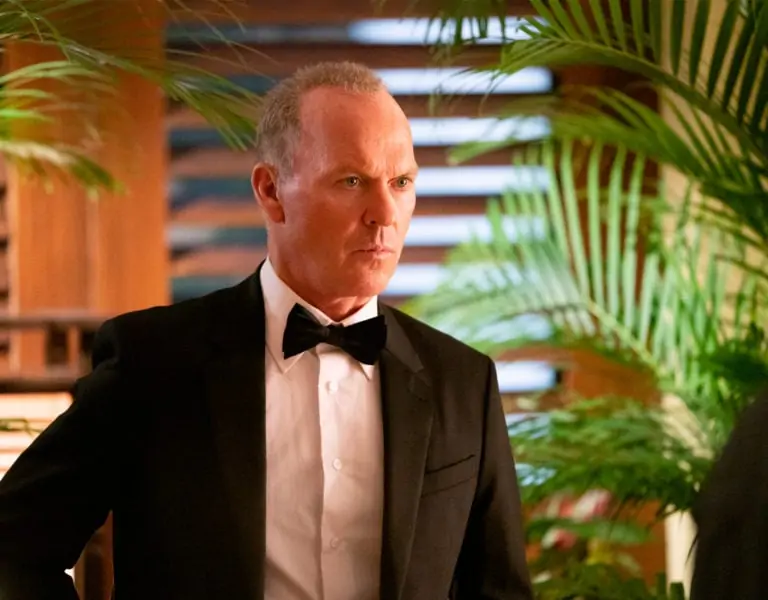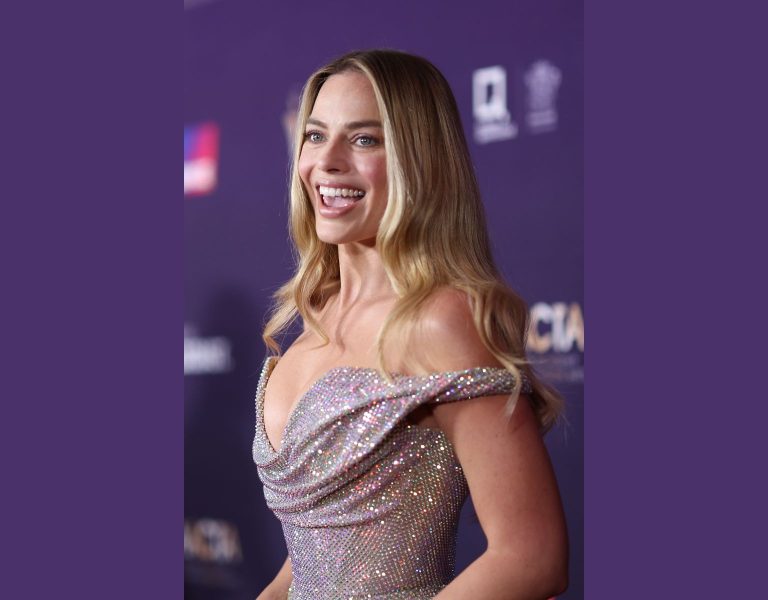Beatrice da Gama on reflecting the grit of 1700s Cornwall in the visual language of her NFTS graduate film, Bal Maiden.
In the rugged landscape of 1700s Cornwall, Bal Maiden unfolds as an intense, unpaved road movie centred around two female tin cobblers, known as bal maidens, who find themselves becoming bloodied partners in crime one night. With a body to dispose of before the working day starts, they must navigate the treacherous terrain through the night. However as it’s revealed to them that the body they believed to be dead is, in fact, alive, this revelation comes a newfound dilemma – if they abandon their plans now, they risk exposure and almost certain death by hanging. What begins as a crime of passion quickly escalates into a life-or-death struggle for survival.

British Cinematographer (BC): Why did you decide to study cinematography? Please tell us a little bit about your filmmaking journey so far, as well as your influences and inspirations.
Beatrice da Gama (BDG): Despite finding any excuse to incorporate film into any given subject at school, I had no idea it was a tangible career when I was younger, and had clarity not struck me like lightning at the last minute, I may have been forcing myself into a perhaps less enthusiastic career in physics.
I studied my Bachelors in filmmaking at MetFilm School, graduating as a director, but a late proposal from a classmate who needed a cinematographer in order to graduate was the second strike of lightning. Experiencing the marriage of technical problem-solving with the visual arts felt incredible. Since then it became so clear it was the path I needed to be on, so I did whatever I could to get into the camera department, and in between that I’d work as a spark. Somehow, I found my way into one of the best cinematography courses in the world at the NFTS.
I love cinema, and there are so many generations and genres that have shaped my outlook, but particular mentions go to Henri Decaë, Robert Elswit ASC and Sven Nykvist ASC FSF whose visions are forever burned into my soul. Every project they put out is striking and profound, and one day I hope to be able to impact the human psyche like they can with their images.
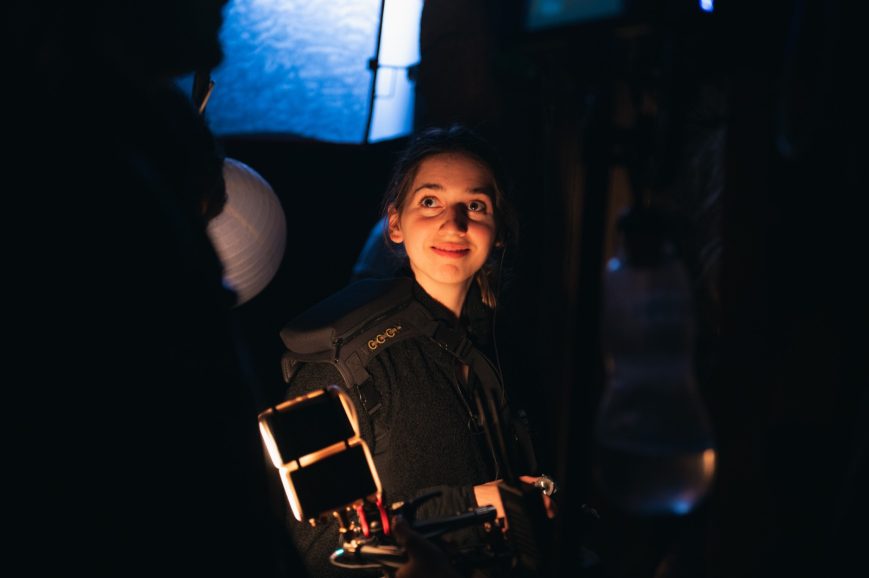
BC: What were your initial discussions with director Aella Jordan-Edge about the visual approach for your film? What look and mood were you trying to achieve?
BDG: We were working with a period setting but a quite timeless story, so there was a lot of discussion about how we were going to transport the audience to the 1700s while still finding a way to connect with the girls as if this happened today, through finding the balance of contrasting the painterly landscapes against the more confrontational handheld closeups.
There’s also an underlying element of supernatural forces within the story and we wanted to reflect that in the images, the fear of what was not known lived in the shadows. When these fears gradually consumed the characters, the environment had to reflect that.
BC: What were your creative references and inspirations for your film? Which films, still photography or paintings were you influenced by?
BDG: The first place we looked for inspiration was the source material, and though there weren’t cameras at the time we looked for whatever illustrations or literature we could to describe the setting as well as some early to mid-century stills of tin mines.
I find one of the best resources for an abundance of inspiration is classical art, even more so for a period piece and a particularly great reference was the haunting moonlit landscapes by Ivan Aivazovsky. The moonlight had such a great quality to it, quite warm and hard and surrounded by rich silhouettes of trees and reflections of water. Aella and I also agreed straightaway There Will Be Blood was a fantastic reference for the grungy, messy beauty we were after and she also introduced me to a great bunch of ’70s references including Picnic at Hanging Rock.
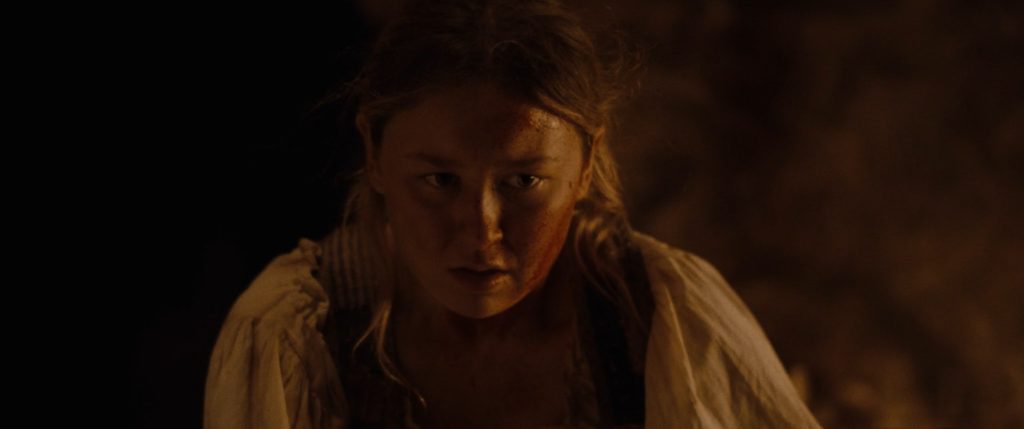
BC: What filming locations were used? Were any sets constructed?
BDG: The majority of the film was shot on location and we were relocating pretty much every day. The outside of the mine and beach were in Cornwall, the smithy was in Little Woodham (a 1600s recreated village in Gosport), the forest was in Aylesbury and the interior of the mine was a set constructed by our incredible production designer Kätlin Loomets on the NFTS campus in Beaconsfield.
BC: What camera and lenses did you choose and why? What made them suitable for this production and the look you were trying to achieve?
BDG: We wanted grit. There was nothing clean about the time and the visuals must reflect that. We were drawn to shooting this on film, not only to enhance the spectacle of a period film but because we could break it in ways we weren’t necessarily able to digitally. We planned on shooting wide screen so in the end opted for two-perf 35mm film with the Arricam LT (lent by the incredibly generous Oliver Stapleton BSC). We tested the Panaflasher (Thanks PV!) which lifted and tinted the blacks and we wanted to see what would happen if we combined that with rating the stock lower it and bring it down in the grade. We weren’t able to use this too often as our build was getting a little too heavy to operate handheld but it’s featured in a short scene of men inside the mine. For lenses we used the Super Speeds (thanks again PV): we needed something fast but also were keen to use vintage glass.

BC: What was your general approach to lighting?
BDG: The initial plan was strictly tungsten as it’s a traditional pairing with celluloid, but this soon changed to embracing tungsten when possible as we didn’t quite have the exterior power we needed to support this. We opted for HMIs (Panalux) for our backlit moonlight and we combined this with a soft source upstage and small CRLS kit (Greenkit) for little accents. However, my amazing gaffer Elena Nassati suggested the much more flexible and mobile silver lame which we could instead use wherever we could to bounce something back over a poly or silverboard. We hung this on branches and we liked this effect, particularly when bouncing from below. Our fire generally remained tungsten, as the source was often just a single candle moving. We used small lanterns with tungsten bulbs on a flicker generator following the movement.
BC: What was the trickiest scene to light?
We had a lot night exteriors which always can be challenging with limited resources, hands and time. The forests often featured quite low-hanging branches which can easily become a nightmare when trying to move a 12ft frame.
Funnily enough, it was a studio day that proved to be trickiest. We prepared and pre-lit for a scene in a very narrow corridor where the bal maidens were pulling Pawly’s body while wearing helmets with candles (like the men in the early scene). This was already a puzzle to figure out how to get enough light on their faces which we finally managed to crack, however there was a last-second structural problem with the helmets and they weren’t able to be used for the scene. So, we needed to first find an excuse for how we could see anything in an unlit mine… If we gave one of the girls a lantern, how do we see them if they’re turned away, etc.?
In the end it worked out completely fine but I think it was a great lesson of how sometimes, even if everything’s already prepared and you think you’re set, things happen and you have to be flexible to circumstances, let some plans go and start from a fresh slate.
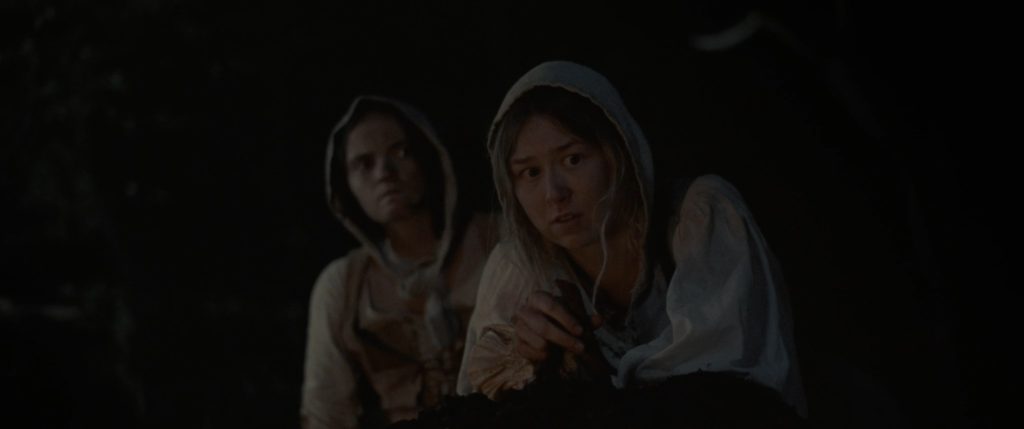
BC: Who did the grade and what look did you want to achieve?
BDG: Karolina Matela was our wonderful colourist. Aella and I discussed in pre-production we wanted a silvery moonlight over anything too cold so we tried a more desaturated look with a hint on green.
The progression of firelight was also a topic of conversation, we thought about the journey of the characters and how the colour would progress from an orange start in the smithy to more yellow and less inviting one down in the final mine scene. We tried out several different looks when it came to the blacks, we looked at a crushed and contrasty version versus lifted and slightly washed-out blacks, we eventually found a sweet spot in between favouring the more faded look.
BC: What is your proudest moment from the production process?
BDG: Being able to complete the film with a two-month-old baby on set is definitely my proudest moment. I only became a mother midway through pre-production on this film and my world changed. I had new responsibilities I’d never experienced and although it was physically challenging at times. I had so much support from the school, my family, friends, production and my incredible director that meant we could complete what was probably one of the most ambitious shoots under any other circumstance.
I would love to particularly highlight my classmate and good friend Essi Hyrkki who not only stepped in as my operator for the shoot, but was there to be my eyes and ears when I had to go off set to nurse as well, and worked with my fantastic camera team, focus puller Sam Reilly, second AC Dan Hempenstall and loader Alyson Thomas.
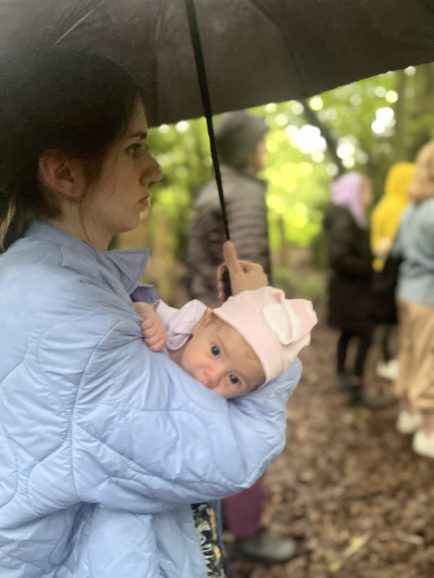
BC: What lessons did you learn from this production that you’ll take with you onto future productions?
BDG: There was so much I learnt from this production, especially logistically. We faced a sea of challenges each day: gale-force winds, sinking clay, tides moving in fast and all sorts, but it showed me how important the team morale is and how it carries you to the finish line. Every member of the crew was determined to be a part of the process and see the production through.
From this film I also had gained a lot of experience working remotely through pre-production. I’m usually the type who always gets their hands dirty and likes to run around with a camera in hand, but in this case where it wasn’t a possibility as baby and I were pretty much on house arrest. It really opened my eyes to how important the skill of mastering communication for the cinematographer is, and even at a distance our direction must speak volumes to influence the visual storytelling. (Another mention of thanks to fellow cinematographers and alumni Helena Gonzalez, Toby Lloyd and Tom Simmington who each went to scout/recce on my behalf for me during this shoot.)
BC: What would be your dream project as a cinematographer?
BDG: I find this often changes with the seasons but what I really look forward to is a great story and great collaborators no matter which continent we end up in. I love visually exploring different cultures especially through stories which transcend geographic location.
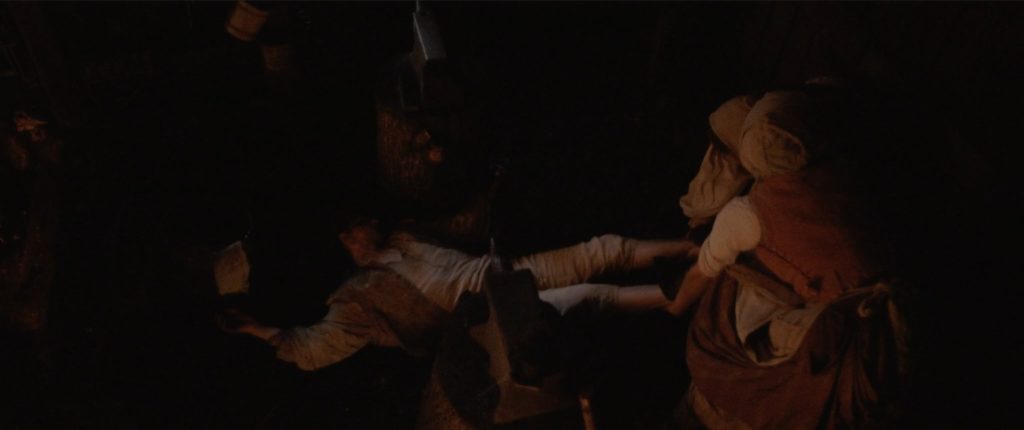
BC: Is there anyone not yet mentioned that you’d like to highlight?
BDG: Stuart Harris BSC, Oliver Stapleton BSC and Duncan Bruce have created the most fantastic cinematography department in the world. Bex Havers and Sunny Baines who, with our wonderful producer Owen Thomas, provided so much support for this shoot to logistically happen with a new mother. Big love to Kate Priestman, Rohum Dilley and Victoria Harris from Panavision, Pat McEnallay and Callum Turner from Greenkit, George Martin and Kelly Amundsen from Panalux and everyone working at the school’s stores at the time: Don Jones, Viktor Csigas, Tom Stevens, James Gallagher, Owen Wiles and Finley Norris. Additionally my family, husband and baby girl who carried me through this production and put up with so much driving, early call times, poor weather and night work without anything but a smile. Big thank you to the NFTS!
Read the rest of our series spotlighting the NFTS’ 2024 cinematography cohort.

